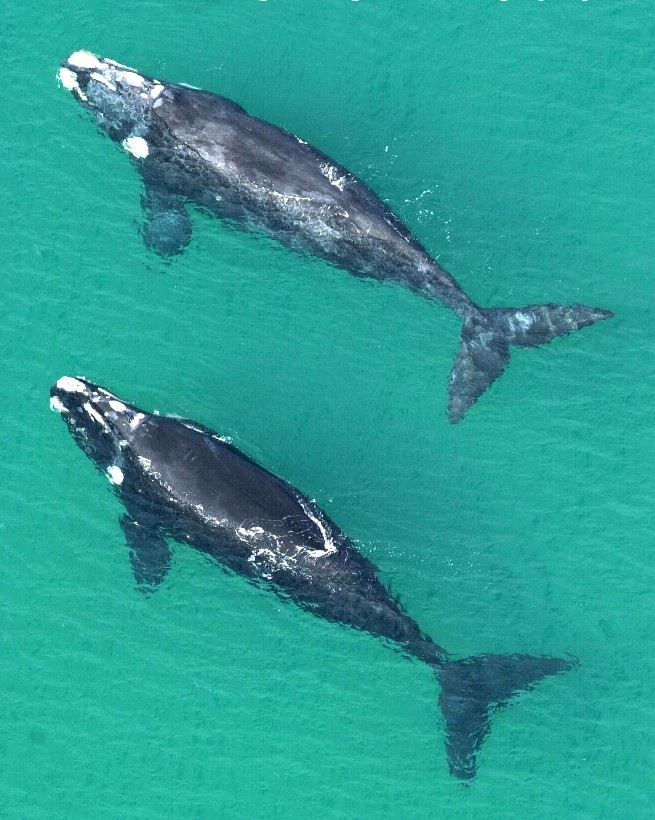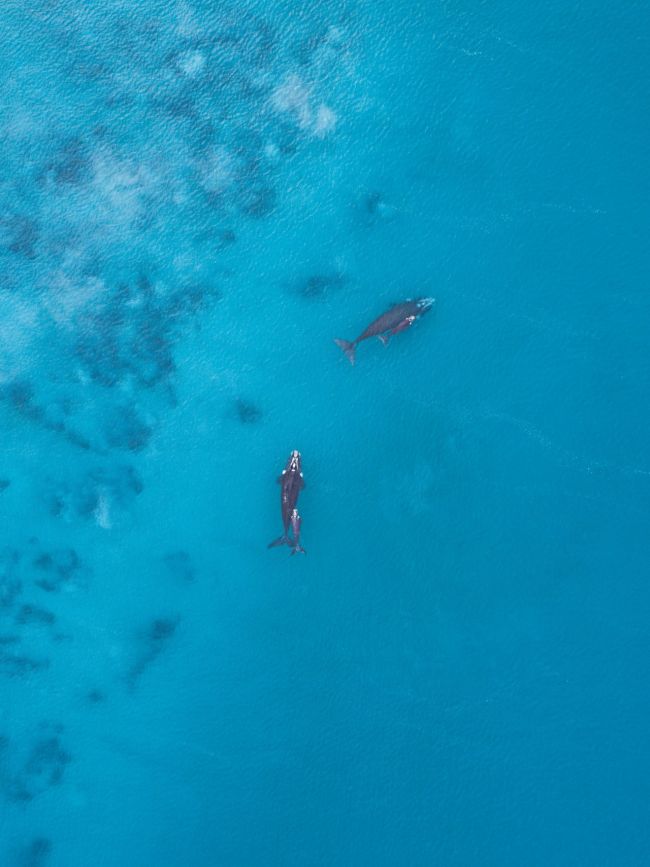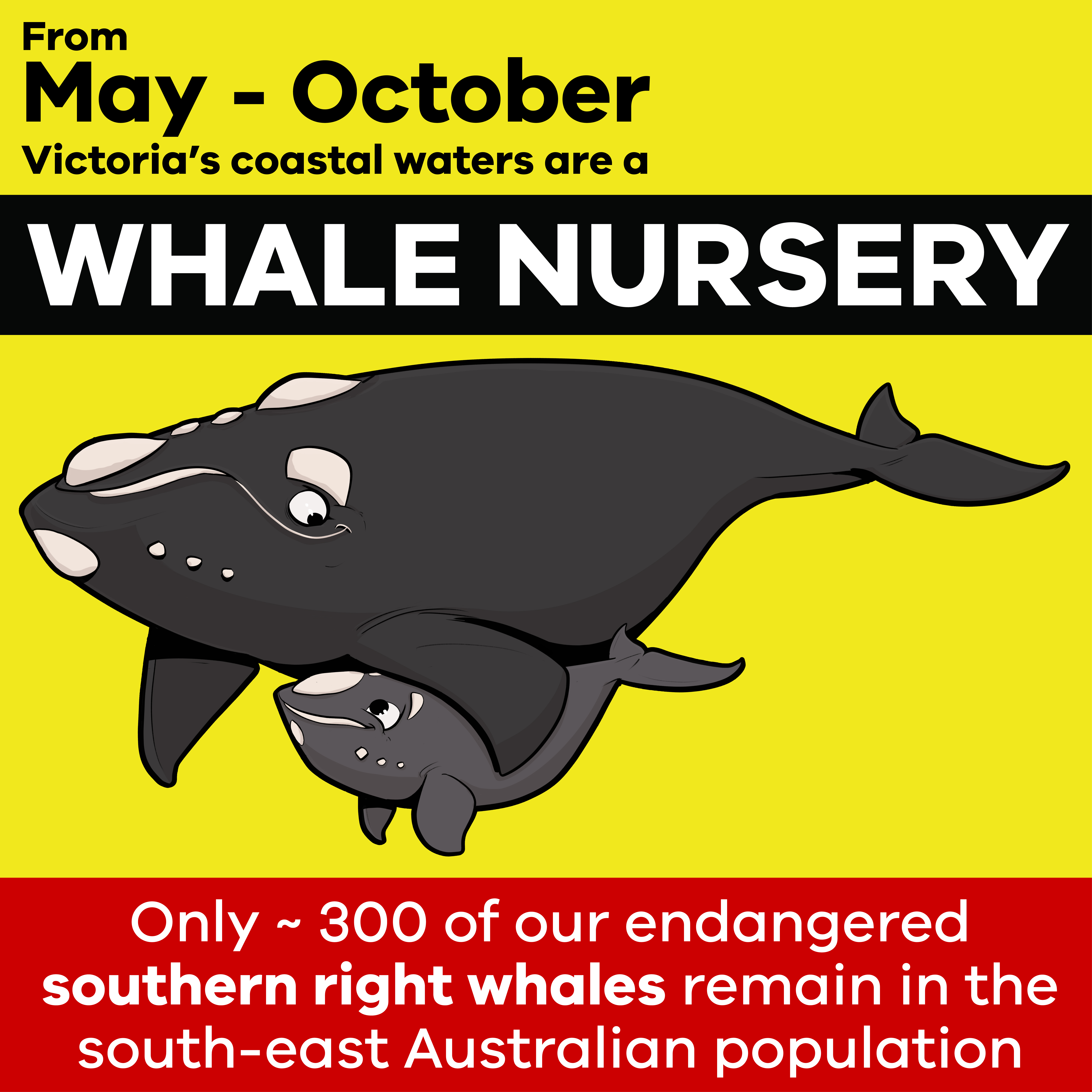The nationally threatened Southern Right Whale is a seasonal visitor to Australia's southern coast, typically between May and October each year. Whales using eastern Australian coastal waters for breeding are thought to comprise a genetically distinct population, made up of less than 300 animals. They are listed as endangered in Victoria, having been severely impacted by whaling, and recovery has been slow following the end of whaling.
Currently, Logans Beach in Warrnambool, Victoria, is the only consistently used calving area for the eastern population, although mothers and calves sometimes use other areas of the coast. It is hoped that as the population recovers, we will see pre-whaling breeding sites being re-established and maybe even new sites emerging.
On this webpage, we provide details of some of the work that ARI has been undertaking to help understand, protect, and manage this enigmatic species.
Identifying and tracking Southern Right Whales
Individual whales can be identified from the unique pattern of white markings (callosities) on their head. Identifying individual whales is important for their conservation, allowing us to better understand changes in population numbers, critical habitat use and potential threats.
DEECA has been recording whale sightings in Victoria for many decades and coordinates the Southeast Australia Southern Right Whale Photo Identification Catalogue (SEA SRW PIC) which now contains over 3000 images of hundreds of individuals. ARI has helped cross-match these photos against a national database to gain insights about how whales are using the Australian coast.
The whale-watching community have provided invaluable contributions to the SEA SRW PIC and the DEECA whale sighting database over many years. Contributions are submitted via WhaleFace, our online platform where citizen scientists

upload whale sightings and photographs. This information is then used to monitor Southern Right Whale movements, breeding patterns and habitat usage, and to inform our management actions.
For more information on how you can submit photos of whale markings and contribute to management of this magnificent threatened species, visit this webpage.
Surveying whales
DEECA’s Barwon South West Region and ARI have been collecting drone imagery of Southern Right Whales since 2017, and have recently partnered with Deakin University on this component of our program. The drone surveys capture high resolution imagery of cow-calf pairs throughout the season. These photos

will play an important role in individual photo identification of the calves; calf callosities take time to develop, and high-resolution imagery increases our chances of cataloguing the calves and re-identifying them as adults. Drone images also help derive body measurements and body condition scores, allowing researchers to conduct health assessments and track the body condition of cow-calf pairs over time.
In 2023 we expanded our research program to include small aircraft flights along the entire Victorian coast. Multiple coastal surveys, spread out over the breeding season, will improve our understanding of whale distribution and help identify any new nursery areas (especially in hard to access areas where data are lacking). Collecting data from structured, systematic scientific surveys across the whole of Victorian coast will fill crucial knowledge gaps and help inform management decisions.
Sighting data from the last 30 years has been analysed in the following journal articles:
- Watson, M., Stamation, K. Charlton, C. and Bannister, J. (2021) Calving intervals, long-range movements and site fidelity of southern right whales (Eubalaena australis) in southeastern Australia. Journal of Cetacean Research Management 22: 17-28
- Stamation, K., Watson, M., Moloney, P., Charlton, C. and Bannister, J. (2020) Population estimate and rate of increase of southern right whales Eubalaena australis in southeastern Australia. Endangered Species Research 41: 373-383
Mitigating threats
When Southern Right Whales visit Victoria’s coastal waters each year, they are vulnerable to boat strikes and disturbance. ARI and the Conservation Regulator are leading a community awareness and engagement initiative to help reduce these risks and help protect our whales. This initiative highlights the following recommended actions for those boating in Victoria’s coastal waters:
- Watch out for whales: Stay alert, as Southern Right Whales can be difficult to spot. These whales have no dorsal fin, so they can look like floating logs as they rest near the surface, often in shallow water close to shore.
- Slow down to 5 knots: Within 300m of a whale, you must slow to 5 knots. It's best to travel at less than 10 knots when within 1km of whales to keep vessel noise low. Mothers and calves need rest and quiet as they communicate in whispers to avoid predators.
- Keep a safe distance: Don't go within 200m of a whale when you are in a boat, or 300m on a jet ski. Stay out of their way and avoid boxing them in. If you find yourself too close to a whale, put your engine in neutral and let them pass.

To find out more information download the info pack (PDF, 1.2 MB) (accessible version (DOCX, 2.1 MB)) or access our Southern Right Whale Monitoring Program 2023 Factsheet(accessible version (DOCX, 3.8 MB))
For further information on current threats and what’s needed to support the recovery on Southern Right Whales in eastern Australia please read our technical report (PDF, 3.4 MB) (accessible version (DOCX, 4.3 MB)).
This work is funded by Victorian Government’s Icon Species Program.
For more information contact: kasey.stamation@delwp.vic.gov.au
Page last updated: 28/10/24